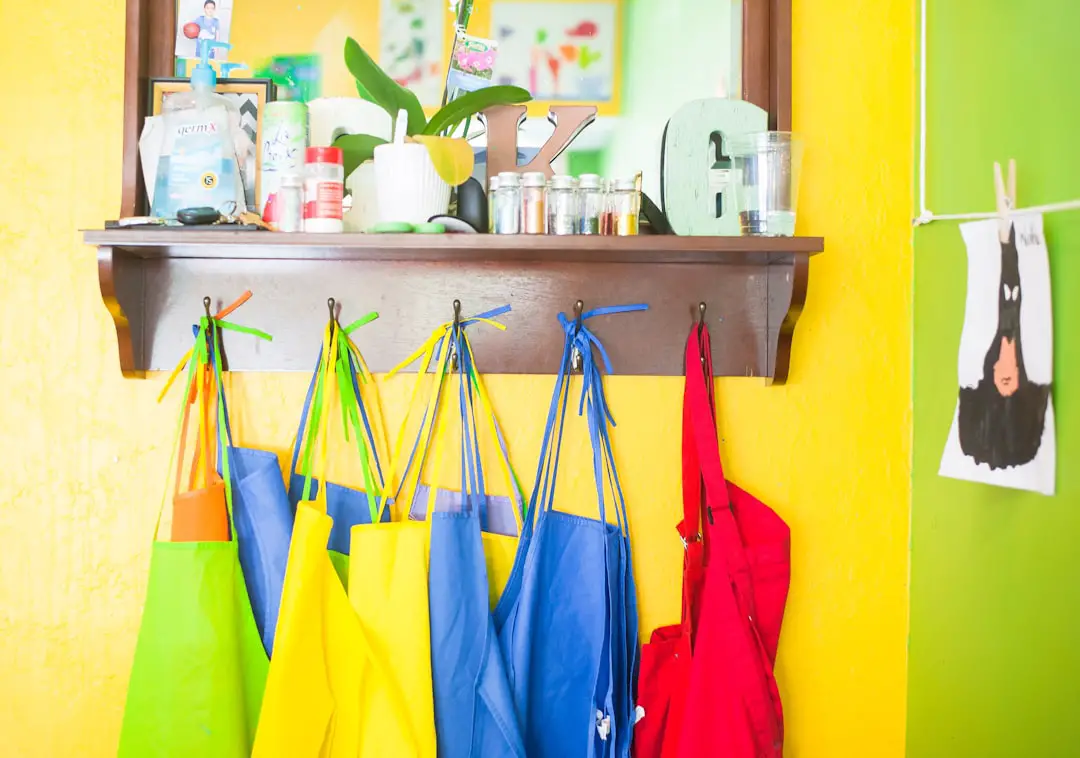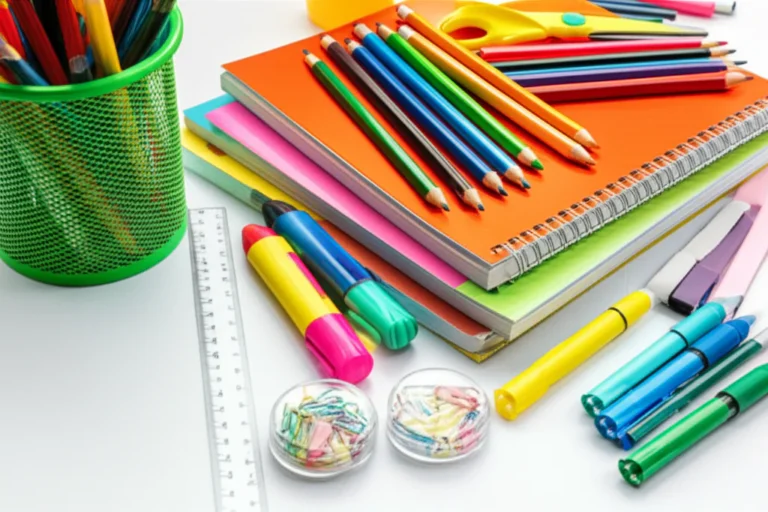Support our educational content for free when you purchase through links on our site. Learn more
Do Teachers Really Get Reimbursed for Supplies? 7 Insider Facts (2025) ✏️
Picture this: You just spent your weekend hunting down the perfect colored markers, sticky notes, and classroom décor—only to wonder, “Will I ever get reimbursed for this?” If you’re a teacher, you know the struggle is real. According to recent surveys, over 90% of educators spend their own money on classroom supplies, often without clear guidance on reimbursement. But here’s the twist—many don’t realize there are ways to get some (or all!) of that money back, if you know where to look and how to play the game.
In this comprehensive guide, we’ll unravel the mystery behind teacher supply reimbursements, share 7 expert tips to maximize your refunds, and explore creative funding alternatives that can ease your financial burden. Whether you’re a newbie or a seasoned pro, you’ll walk away ready to turn those receipts into cash and keep your classroom stocked without breaking the bank.
Key Takeaways
- Teacher reimbursements vary widely by district and school—knowing your policy is step one.
- Saving and organizing receipts meticulously is crucial to getting reimbursed successfully.
- Deadlines and spending limits matter—missing these can cost you money.
- Tax deductions offer a valuable fallback if reimbursements aren’t available or don’t cover all expenses.
- Creative funding options like grants and crowdfunding can supplement your classroom budget.
- Tech tools and apps can simplify tracking expenses and streamline reimbursement requests.
- Advocacy and collaboration with colleagues can improve reimbursement policies and resource sharing.
Ready to reclaim your classroom budget? Start by exploring trusted Classroom Supplies, Office Supplies, and Instructional Technology at Teacher Supply Store™—your one-stop shop for everything your classroom needs!
Table of Contents
- Quick Tips and Facts About Teacher Supply Reimbursements ✅
- The Real Deal: Why Teachers Spend Their Own Money on Supplies 💸
- Understanding Teacher Supply Reimbursement Policies: What Schools and Districts Offer 🏫
- Top 7 Steps to Get Your Classroom Supplies Reimbursed Like a Pro 📝
- Common Pitfalls and How to Avoid Reimbursement Rejection ❌
- Teacher Supply Tax Deductions vs. Reimbursements: What’s the Difference? 💡
- How to Maximize Your Reimbursement: Insider Tips from Veteran Educators 🎓
- Creative Funding Alternatives: Grants, Donations, and Crowdfunding for Classroom Supplies 🎁
- Tech Tools and Apps That Simplify Teacher Reimbursement Tracking 📱
- Answers Others Found Helpful: Real Teacher Stories and FAQs 💬
- Conclusion: Making the Most of Your Classroom Budget 💪
- Recommended Resources and Links for Teacher Supply Reimbursements 🔗
- FAQ: Your Burning Questions About Teacher Supply Reimbursements Answered 🔍
- Reference Links: Trusted Sources and Further Reading 📚
Quick Tips and Facts About Teacher Supply Reimbursements ✅
Let’s face it: teachers shelling out their own money for classroom essentials is practically a universal truth. 💸 But did you know there are ways to get reimbursed for those purchases? We’re talking about reclaiming your hard-earned cash for those stacks of construction paper, packs of pencils, and maybe even that fancy new document camera!
Here’s the lowdown on teacher supply reimbursements:
- Reimbursements vary widely: School districts, states, and even individual schools have different policies. 😩 Some offer a flat amount, others have spending limits, and a few lucky ducks get full reimbursement (we see you, North Dakota!).
- Documentation is key: Save those receipts! 🧾 You’ll need them to prove what you spent and when. A dedicated folder or app can be a lifesaver.
- Deadlines sneak up: Don’t miss out! 🗓️ Reimbursement windows often align with the school year or fiscal year, so mark your calendar and submit those requests on time.
- Tax deductions can help: Even if you don’t get fully reimbursed, you can often deduct up to $300 of unreimbursed expenses on your federal taxes. Source: IRS 💰
Think of it this way: Reimbursements are like bonus points for doing your job. You’ve already earned them by creating an engaging learning environment for your students. Now it’s time to cash in!
The Real Deal: Why Teachers Spend Their Own Money on Supplies 💸
We’ve all been there. You walk into your classroom at the start of a new year, bright-eyed and bushy-tailed, only to realize the “generous” supply budget wouldn’t cover a week’s worth of glue sticks for your little Picassos. 😩 So, what do we do? We dip into our own pockets, of course!
But why? Why are teachers expected to foot the bill for educating the future generation? 🤔
Here’s the reality:
- Funding gaps are real: Despite best intentions, many schools face tight budgets, leaving little room for classroom extras (or sometimes even essentials!).
- We want the best for our students: Let’s be honest, we’d climb mountains for our kids! We envision vibrant classrooms bursting with engaging materials, and sometimes that means taking matters into our own hands. 💪
- It’s more than just pencils and paper: Those classroom transformations, the themed bulletin boards, the flexible seating options – they all add up! These extras create a welcoming and stimulating learning environment, but they often come with a personal price tag.
It’s a reality highlighted by a recent survey by DonorsChoose, where teachers reported spending an average of $610 of their own money on classroom supplies. Source: Chalkbeat And let’s not forget the countless hours spent scouring clearance aisles and crafting DIY masterpieces!
But here’s the good news: it doesn’t have to be all out of pocket! Keep reading to discover how to navigate the world of teacher supply reimbursements and reclaim some of that hard-earned cash. 😉
Want to learn more about the hidden costs of being a teacher? Check out our related article about Teachers’ Hidden Costs: 17+ Classroom Essentials 🍎.
Understanding Teacher Supply Reimbursement Policies: What Schools and Districts Offer 🏫
Navigating the world of teacher supply reimbursements can feel like deciphering ancient hieroglyphics. hieroglyphics. Every school district, and sometimes even individual schools, seems to have its own unique set of rules and regulations.
But fear not, intrepid educators! We’re here to shed some light on these mysterious policies. 🔦
Where to Start Your Quest for Knowledge 🗺️
- Your school or district website: Often (but not always!) you’ll find information about reimbursement policies buried within the depths of the website. Look for keywords like “employee handbook,” “teacher resources,” or “financial policies.”
- Your friendly neighborhood school secretary: They’re the keepers of all things school-related! Don’t hesitate to ask about reimbursement procedures and deadlines.
- Your trusty union representative: If you’re part of a union, they can be a valuable resource for understanding your rights and advocating for better reimbursement policies.
Common Reimbursement Structures 🏗️
While every policy is unique, here are some common reimbursement structures you might encounter:
- Flat amount: You receive a set amount at the beginning of the year (or semester) to spend on classroom supplies. Use it wisely!
- Spending limits: You can purchase supplies throughout the year, but there’s a cap on how much you can be reimbursed. Keep track of your spending!
- Itemized reimbursement: You submit receipts for specific items, and the school or district reimburses you accordingly. Be prepared to provide detailed documentation.
Pro Tip: Don’t be afraid to advocate for yourself and your colleagues! If you believe your school’s reimbursement policy is inadequate, speak up!
Top 7 Steps to Get Your Classroom Supplies Reimbursed Like a Pro 📝
Ready to turn those stacks of receipts into a well-deserved refund? Follow these seven steps to become a teacher supply reimbursement ninja! 🥷
1. Know Your Policy: This step is non-negotiable. Channel your inner Sherlock Holmes and track down your school or district’s reimbursement policy. We covered how to do this in the previous section. You got this! 🕵️♀️
2. Save Everything: We’re talking receipts, invoices, order confirmations – if it proves you spent money on classroom supplies, keep it! A dedicated folder, accordion file, or even a trusty shoebox can be your best friend. 🗃️
3. Make a List, Check It Twice: Create a detailed list of all your eligible expenses. Include the item description, date of purchase, vendor, and amount spent. This will make your life (and your school secretary’s life) much easier come reimbursement time.
4. Meet Those Deadlines: Reimbursement deadlines are like school fire drills – they always seem to pop up when you least expect them. Mark your calendar and submit your requests on time to avoid missing out on precious funds.
5. Follow the Rules: Each school or district has its own set of procedures. Some may require physical forms, while others might have online submission portals. Pay attention to the details and follow the instructions carefully.
6. Be Patient: Reimbursements can take time. Don’t panic if the money doesn’t appear in your account overnight. If you haven’t received your reimbursement within a reasonable timeframe, politely follow up with the appropriate person.
7. Celebrate Your Success: You did it! You successfully navigated the reimbursement maze and got your money back. Now go treat yourself to something nice (or maybe just stock up on more glue sticks!). 🎉
Common Pitfalls and How to Avoid Reimbursement Rejection ❌
We’ve all been there – you submit your reimbursement request with a triumphant flourish, only to have it returned with a big, fat REJECTED stamp. 💔 But don’t despair! By understanding common reimbursement pitfalls, you can avoid the heartbreak and ensure your requests sail through the approval process.
1. Missing or Incomplete Documentation 🚫
The Problem: Receipts faded to the point of illegibility? Missing order confirmations? Incomplete reimbursement forms? These are all surefire ways to land your request in the rejection pile.
The Solution: Become best friends with your scanner or a reliable receipt-tracking app. Keep digital copies of everything! And when it comes to filling out forms, channel your inner perfectionist and double-check every detail.
2. Ineligible Expenses 🙅♀️
The Problem: That inflatable bouncy castle might sound like a fantastic addition to your classroom (and we applaud your creativity!), but chances are it won’t fly as a reimbursable expense.
The Solution: Familiarize yourself with your school or district’s list of eligible expenses. When in doubt, ask! It’s better to be safe than sorry (and out of pocket).
3. Exceeding Spending Limits 💸
The Problem: You went a little overboard on the classroom decor, and now your reimbursement request exceeds the allotted amount.
The Solution: Keep track of your spending throughout the year! Use a spreadsheet, budgeting app, or even good old-fashioned pen and paper to monitor your expenses and stay within the limits.
4. Missing Deadlines 🗓️
The Problem: Life got busy, you missed the reimbursement deadline, and now you’re left holding the bag (and the receipts).
The Solution: Set reminders! Treat reimbursement deadlines with the same importance as parent-teacher conferences or report card deadlines. Your bank account will thank you.
Teacher Supply Tax Deductions vs. Reimbursements: What’s the Difference? 💡
Reimbursements and tax deductions are often mentioned in the same breath, but they’re not quite the same thing. Understanding the difference can help you maximize your savings and keep more money in your pocket.
Teacher Supply Reimbursements: Getting Your Money Back 💰
- Definition: Direct payments from your school or district to cover the cost of eligible classroom supplies.
- How it works: You submit documentation (receipts, invoices, etc.) to your school or district, and they reimburse you for the approved expenses.
- Key point: You’re getting back money you already spent.
Teacher Supply Tax Deductions: Lowering Your Taxable Income 📉
- Definition: A tax break that allows you to deduct a certain amount of eligible classroom expenses from your taxable income, potentially reducing your tax liability.
- How it works: You claim the deduction on your federal income tax return (Form 1040).
- Key point: You’re reducing the amount of income you’re taxed on, which can lead to tax savings.
The Catch: You can’t double-dip!
If you receive reimbursement for a classroom expense, you can’t also claim it as a tax deduction. Choose the option that benefits you most!
Example:
Let’s say you spent $500 on classroom supplies. You could:
- Option 1: Seek reimbursement from your school or district for the full $500.
- Option 2: If reimbursement isn’t an option (or doesn’t cover the full amount), you can deduct up to $300 on your federal taxes.
Pro Tip: Keep meticulous records of all your classroom expenses, whether you’re seeking reimbursement or planning to claim a tax deduction.
How to Maximize Your Reimbursement: Insider Tips from Veteran Educators 🎓
Want to become a reimbursement rockstar? We asked seasoned educators to spill their secrets on maximizing those reimbursements and stretching their classroom budgets further.
1. Time Your Purchases Strategically 🗓️
“I always try to make my big-ticket purchases (like furniture or technology) at the beginning of the fiscal year when the reimbursement budget is fresh.” – Mrs. Johnson, 5th Grade Teacher
2. Explore Alternative Vendors 🛒
“Don’t limit yourself to big box stores! I’ve found amazing deals on classroom supplies at discount stores, thrift shops, and even online marketplaces like Etsy.” – Mr. Garcia, High School Art Teacher
3. Embrace the Power of Collaboration 🤝
“Our school has a teacher resource room where we can share and borrow supplies. It’s a lifesaver, especially for those one-off items you only need once or twice a year.” – Ms. Lee, Kindergarten Teacher
4. Get Creative with Funding Sources 💡
“I’ve had great success using crowdfunding platforms like DonorsChoose to fund special projects and purchase essential supplies.” – Mr. Williams, Music Teacher
5. Don’t Be Afraid to Negotiate 🗣️
“If you’re making a large purchase, don’t hesitate to ask for a discount or bulk pricing from vendors. You might be surprised at what they’re willing to offer.” – Mrs. Rodriguez, School Librarian
Creative Funding Alternatives: Grants, Donations, and Crowdfunding for Classroom Supplies 🎁
Reimbursements and tax deductions are fantastic, but they’re not the only ways to fund your classroom dreams. Let’s explore some creative funding alternatives that can help you secure those much-needed supplies.
1. Grants: Free Money for Your Classroom 🎉
- What they are: Funds awarded by organizations (foundations, corporations, government agencies) to support specific projects or initiatives.
- Where to find them: Online databases, grant-making organizations, your school district, even local businesses.
- Tip: Tailor your application to the grant’s specific focus and highlight how your project aligns with their mission.
2. Donations: Tapping into Community Support 💖
- What they are: Contributions (money, supplies, volunteers) from individuals or businesses looking to support education.
- Where to find them: Reach out to parents, local businesses, community organizations, even former students.
- Tip: Clearly communicate your needs and how their support will directly benefit students.
3. Crowdfunding: Harnessing the Power of the Crowd 💻
- What it is: Raising funds for a specific project or cause by soliciting small contributions from a large number of people, typically online.
- Popular platforms: DonorsChoose, GoFundMe, Kickstarter.
- Tip: Create a compelling project description, share it widely, and offer updates to keep donors engaged.
4. Business Partnerships: Mutually Beneficial Collaborations 🤝
- What they are: Collaborations between schools and local businesses to provide resources and support.
- Where to find them: Reach out to businesses whose values align with your school’s mission.
- Tip: Highlight the benefits for both parties, such as positive PR for the business and valuable resources for your students.
Tech Tools and Apps That Simplify Teacher Reimbursement Tracking 📱
Gone are the days of shoeboxes overflowing with crumpled receipts! Embrace the digital age with these tech tools and apps designed to simplify teacher reimbursement tracking and make your life easier.
1. Receipt-Tracking Apps: Your Digital Filing Cabinet 🗂️
- What they do: Capture, store, and organize your receipts electronically. Some even offer features like expense categorization and report generation.
- Popular options: Expensify, Shoeboxed, Wave Receipts.
2. Budgeting Apps: Track Your Spending, Stay on Budget 📊
- What they do: Help you monitor your income and expenses, set budgets, and track your progress toward financial goals.
- Popular options: Mint, YNAB (You Need a Budget), Personal Capital.
3. Spreadsheet Templates: Customizable Organization 🧮
- What they are: Pre-designed spreadsheets that you can customize to track your classroom expenses, categorize purchases, and calculate totals.
- Where to find them: Microsoft Excel, Google Sheets, or online template libraries.
4. Teacher-Specific Tools: Designed with Educators in Mind 🍎
- What they are: Platforms or apps created specifically for teachers, often combining reimbursement tracking with other classroom management features.
- Examples: TeacherKit, ClassDojo (some features may require paid subscriptions).
Pro Tip: Explore different options and find the tools that best fit your needs and workflow.
Answers Others Found Helpful: Real Teacher Stories and FAQs 💬

We’ve gathered some real-life teacher experiences and frequently asked questions to provide even more insights and guidance on navigating the world of teacher supply reimbursements.
Real Teacher, Real Story: “I Turned My Receipts into a Shopping Spree!” 🛍️
“I used to be terrible about saving receipts. But then I heard a colleague talk about how she uses a receipt-tracking app and gets reimbursed for hundreds of dollars each year. I decided to give it a try, and I was amazed at how much money I was able to get back! I even treated myself to a little shopping spree with my reimbursement check.” – Ms. Miller, 2nd Grade Teacher
FAQ: What if My School Doesn’t Offer Reimbursements? 🤔
We feel your pain! While reimbursement policies are becoming more common, not all schools offer them. If your school doesn’t have a formal reimbursement program, don’t give up hope! Explore alternative funding sources like grants, donations, and crowdfunding. You can also advocate for change within your school or district.
FAQ: Can I Get Reimbursed for Items I Purchased Online? 💻
In most cases, yes! As long as you have a valid receipt or order confirmation that shows the item description, purchase date, vendor, and amount spent, you should be able to get reimbursed for online purchases.
FAQ: What Happens if I Miss the Reimbursement Deadline? 😨
Don’t panic! Contact your school or district’s business office as soon as possible. They may be able to make an exception or offer guidance on alternative options.
Conclusion: Empowering Teachers to Reclaim Their Classroom Costs 💪

Wow, what a journey! From uncovering the hidden truths behind teacher supply spending to mastering the art of reimbursement, you’re now armed with the knowledge to turn those classroom expenses into a well-deserved refund.
Here’s the big takeaway: While many teachers still spend hundreds (sometimes thousands!) of their own dollars on classroom essentials, there are ways to get reimbursed, claim tax deductions, and tap into creative funding sources. The key is being proactive—knowing your school’s policies, keeping impeccable records, and exploring every funding avenue available.
Remember the stories from veteran educators? Their secret sauce is strategic purchasing, savvy use of tech tools, and community collaboration. You can do this too!
If you’ve been feeling overwhelmed by the cost of classroom supplies, don’t despair. With these tips, you can lighten your financial load and focus more on what you do best: inspiring and educating the next generation.
And hey, if you ever feel like you’re drowning in receipts, just think of that triumphant moment when your reimbursement check arrives. It’s like a mini victory dance for your wallet! 🕺💃
Recommended Links 🔗
Ready to stock up on classroom essentials while maximizing your reimbursement potential? Here are some top products and brands trusted by teachers nationwide:
- Classroom Supplies: Shop Classroom Supplies on Teacher Supply Store™
- Office Supplies: Shop Office Supplies on Teacher Supply Store™
- Instructional Technology: Shop Instructional Technology on Teacher Supply Store™
Helpful Products for Tracking and Organizing Reimbursements:
- Expensify Receipt Tracker:
- Shoeboxed Receipt Organizer:
- DonorsChoose Crowdfunding Platform:
Recommended Books for Teachers on Budgeting and Classroom Management:
- The Teacher’s Guide to Classroom Management by Tracey Garrett
- The Budget-Savvy Teacher by Stacey Rolfe
FAQ: Your Burning Questions About Teacher Supply Reimbursements Answered 🔍

What percentage of teachers pay for school supplies out of pocket?
According to the National Center for Education Statistics and surveys like the DonorsChoose report, approximately 95% of public school teachers spend their own money on classroom supplies. This staggering figure highlights the widespread nature of the issue and the dedication teachers have to their students. The average amount spent can range widely—from modest sums to thousands of dollars annually—depending on grade level, subject, and school resources.
Read more about “Do Teachers Pay Out of Pocket for School Supplies? …”
How can teachers get reimbursed for classroom supplies and materials?
Teachers can typically get reimbursed by:
- Submitting receipts and expense forms to their school or district’s finance office, following the specific reimbursement policies in place.
- Using designated reimbursement portals or paper forms as required by their employer.
- Meeting deadlines and adhering to spending limits outlined by their district.
- Advocating for reimbursement programs if none currently exist.
It’s essential to check your school’s official policy and maintain organized records. Some districts offer flat stipends, while others reimburse itemized expenses. If your school doesn’t offer reimbursement, consider alternative funding sources like grants or crowdfunding.
Read more about “Teachers’ Hidden Costs: 17+ Classroom Essentials 🍎”
What are some ways for teachers to get free or discounted supplies for their classroom?
Teachers can access free or discounted supplies through:
- DonorsChoose.org: A popular crowdfunding platform where teachers can request specific classroom items and donors fund them.
- Local businesses and community organizations: Many are willing to donate supplies or sponsor classrooms.
- Teacher resource rooms or supply closets: Some schools maintain shared supplies for staff use.
- Discount programs: Retailers like Staples and Office Depot offer educator discounts or special programs.
- Grants: Numerous foundations offer grants specifically for classroom materials (e.g., NEA Foundation Grants).
Read more about “Where Can Teachers Find 7 Affordable Classroom Decorations? 🎨 (2025)”
Are there any tax deductions available for teachers who purchase their own classroom supplies?
Yes! The IRS allows eligible educators to deduct up to $300 (for 2023 tax year and beyond) of unreimbursed expenses for classroom supplies, books, and equipment on their federal tax returns. This is known as the Educator Expense Deduction.
Important: You cannot claim a tax deduction for expenses that have been reimbursed by your school or district. Keep detailed records and consult IRS guidelines or a tax professional for personalized advice. IRS Educator Expense Deduction
Can teachers get reimbursed for technology purchases like tablets or software?
Many districts recognize the importance of instructional technology and may reimburse for computers, tablets, software, or subscriptions if they are used for classroom instruction. However, policies vary widely, and some require prior approval before purchase. Always check your district’s guidelines and keep detailed receipts.
What should I do if my reimbursement request is denied?
If your request is denied:
- Review the rejection reason carefully.
- Check if you missed documentation or deadlines.
- Contact your school’s finance office or union representative for clarification or to appeal.
- Consider alternative funding sources if reimbursement isn’t possible.
- Advocate for clearer policies or better support within your school community.
Reference Links: Trusted Sources and Further Reading 📚
- IRS: Deducting Teachers’ Educational Expenses
- Illinois Department of Revenue: K-12 Instructional Materials and Supplies Credit
- Chalkbeat: Educators say they spend big on school supplies to support students
- DonorsChoose: Crowdfunding for Classroom Projects
- NEA Foundation: Grants for Educators
- Teacher Supply Store™ Classroom Supplies
- Teacher Supply Store™ Office Supplies
- Teacher Supply Store™ Instructional Technology
You’re now fully equipped to tackle the challenge of teacher supply reimbursements head-on. Go forth, save your receipts, claim your deductions, and most importantly—keep making your classroom the vibrant, inspiring place your students deserve! 🍎✨



